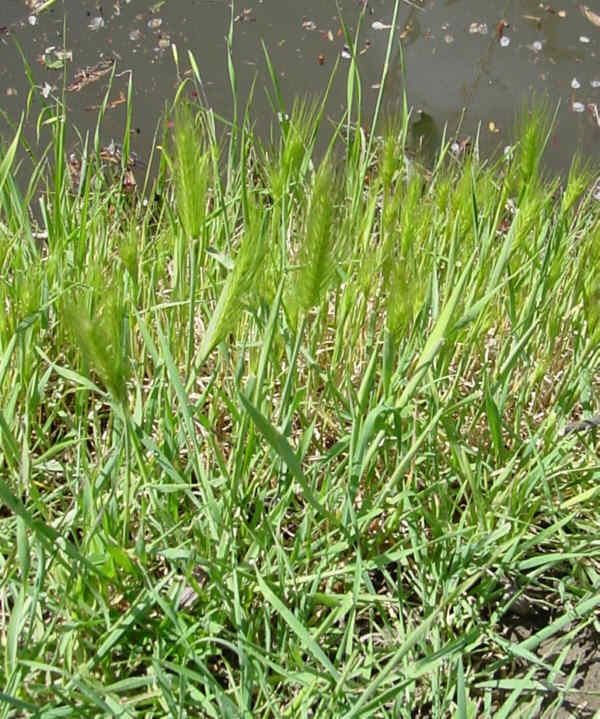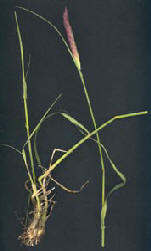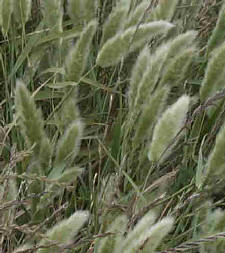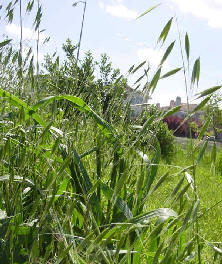|
 Mediterranean Barley Mediterranean Barley
Hordeum marinum ssp. gussoneanum
Mediterranean
barley often forms dense stands on the borders of marshlands. It is
a low- growing introduced annual grass with rigid, flattened flower
spikes that have a light dull blue-green color |
|
 Italian Ryegrass Italian Ryegrass
Lolium multiflorum
Italian ryegrass
is an annual grass that has been introduced from Europe and is
cultivated as a meadow, pasture, or lawn grass. Its flowers are
borne on short spikelets that alternate on the stem. The seed has a
short, thin awn (hair). It is a considered to be a facultative
wetland indicator species because it occurs in wetlands as often as
it occurs in uplands. |
|
 Canary Grass Canary Grass
Phalaris sp.
Canary grasses
are annual or perennial grasses that were introduced from the
Mediterranean region because they provide good forage for
livestock. They have become naturalized and are common urban weeds
in moist areas. |
 Rabbitfoot Grass Rabbitfoot Grass
Polypogon monspeliensis
Rabbitfoot is
a low-growing annual grass that is native to Europe. It has become
naturalized in California and is commonly found growing on wet or
moist soils. The dense flowering head has long silky hairs and
resembles a rabbit’s foot. |
|
 Wild Oats Wild Oats
Family PoaceaeAvena fatua
Most wild oats
germinate and emerge in early to mid-spring. Cool, moist conditions
promote maximum emergence, so crops that are seeded early are
usually the most heavily infested. Fall or early spring applications
of nitrogen fertilizer stimulate germination. Growth of roots and
shoot of wild oats is slow for the first two weeks, but increases
quickly from then on. Most wild oats tiller within a month of
emergence. |